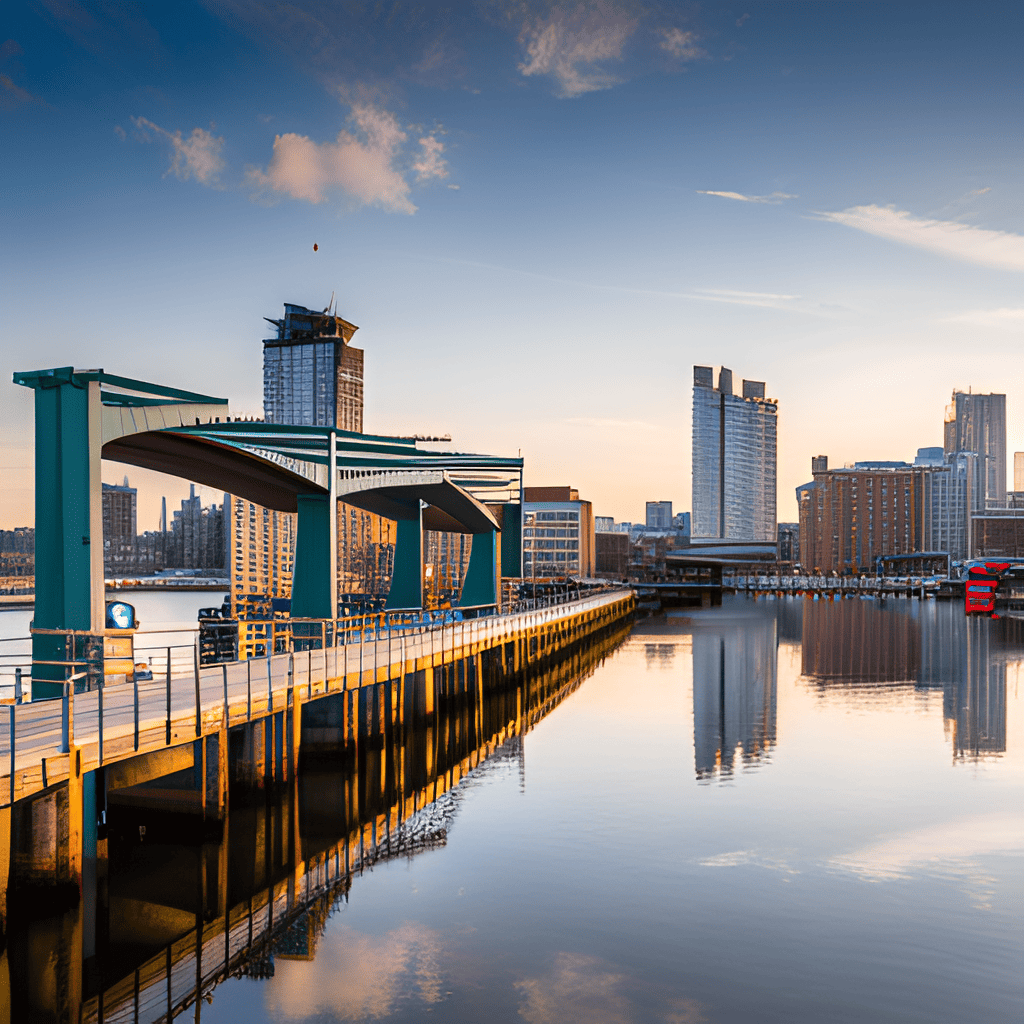Greenheart wood is highly valued for its exceptional strength, durability, and natural resistance to decay and insect attack. It is grown in tropical rainforests in South America and is popular in a wide variety of demanding applications, particularly in marine and heavy construction.
Its ability to withstand harsh environmental conditions, including exposure to water and termites, ensures long-lasting performance and minimal maintenance requirements, making it a preferred option for projects requiring reliability and longevity.
Popular Applications For Greenheart Wood
Due to these properties, Greenheart wood is suitable for a wide range of commercial and industrial applications, including:
- Marine Construction: Greenheart is widely used in marine construction, including piers, docks, wharves, and bridges, thanks to its ability to withstand harsh marine environments and constant exposure to water.
- Building and Structural Applications: The wood’s strength and durability make it ideal for heavy-duty structural components, such as beams, posts, and columns, in both residential and commercial buildings.
- Flood Defense Structures: Greenheart is commonly employed in flood defense structures, such as floodgates and seawalls, due to its natural resistance to water and decay.
- Decking and Flooring: The wood’s robustness and attractive appearance make it suitable for decking and flooring in high-traffic areas, where durability is essential.
- Heavy Construction: Greenheart is used in heavy construction projects, such as railroad ties, sleepers, and cross arms, where its strength and resistance to wear are crucial.
- Industrial Applications: The wood’s toughness and resistance to chemicals make it valuable in industrial settings for equipment supports, conveyor belts, and other applications.
- Utility Poles: Greenheart is utilized for utility poles, providing a reliable and long-lasting solution for electricity and telecommunication infrastructure.
- Wooden Bridges: Greenheart wood is often used in the construction of wooden bridges due to its strength and resistance to decay, making it suitable for both pedestrian and vehicular bridges.
- Mining and Industrial Piping: The wood’s resistance to chemicals and durability make it useful for mining and industrial piping applications.
Greenheart’s remarkable properties and versatility make it a preferred choice for demanding applications where strength, durability, and resistance to environmental factors are essential.
Greenheart Wood Facts And Characteristics
Here’s a table with 15 interesting and important characteristics of Greenheart trees and wood:
| Aspect | Description |
|---|---|
| Tree Name | Greenheart (Chlorocardium rodiei) |
| Tree Height | Can reach heights of up to 45 meters (148 feet) |
| Trunk Diameter | Large trunk diameter, up to 1.5 meters (5 feet) |
| Growth Environment | Native to tropical rainforests in South America |
| Wood Color | Olive green to dark brown with occasional black streaks |
| Wood Grain | Interlocked grain pattern, providing excellent strength |
| Density | Exceptionally dense hardwood with a density of about 1000 kg/m³ (62 lbs/ft³) |
| Durability | Highly durable and naturally resistant to decay, termites, and marine borers |
| Workability | Challenging to work due to density, requiring sharp tools and slow cutting |
| Stability | Relatively stable with low movement and minimal shrinkage |
| Finishing Qualities | Can be polished to a smooth and attractive surface |
| Sustainability | Sustainably managed in some regions of its native habitat |
| Odor | Greenheart has a mild cedar-like scent |
| Toxicity | The wood contains natural toxins, which may cause skin irritation |
| Common Uses | Marine construction, heavy building structures, decking, flooring, utility poles, etc. |

Substitutes For Greenheart Wood
While Greenheart wood offers unique properties, several other hardwood species can serve as substitutes in certain applications, providing similar qualities and performance. Some common substitutes for Greenheart wood include:
- Ipe (Tabebuia spp.): Ipe wood shares similar strength, durability, and natural resistance to decay, making it a suitable alternative for outdoor and marine applications.
- Purpleheart (Peltogyne spp.): Purpleheart wood offers excellent strength and durability, with a striking purple color that can be used in decorative and structural applications.
- Tatajuba (Bagassa guianensis): Tatajuba wood possesses good strength and decay resistance, making it a potential substitute for decking and outdoor construction.
- Massaranduba (Manilkara huberi): Massaranduba wood is known for its high density and durability, making it a viable alternative for outdoor structures and decking.
- Bongossi (Millettia laurentii): Bongossi wood exhibits high strength and resilience, making it suitable for marine construction and other heavy-duty applications.
- Angelim Pedra (Dinizia excelsa): Angelim Pedra wood is a dense and durable hardwood that can be used for various outdoor applications and heavy construction.
- Greenheart (Ocotea rodiaei): This species shares a similar name but is not related to the true Greenheart (Chlorocardium rodiei) and can serve as an alternative for some applications.
When considering a substitute for Greenheart wood, it is essential to evaluate the specific project requirements, the desired properties, and availability in your region. Each substitute offers distinct characteristics, so consulting with wood experts or suppliers can help identify the most suitable alternative for your particular application.
Final Thoughts
Greenheart (Chlorocardium rodiei) is an exceptionally strong and durable tropical hardwood native to South America. Its unique combination of strength, resistance to decay, and natural toxins make it highly suitable for marine construction, heavy building structures, decking, flooring, utility poles, and other demanding applications.
However, its density and challenging workability require skilled craftsmanship and specialized tools for successful woodworking projects.

